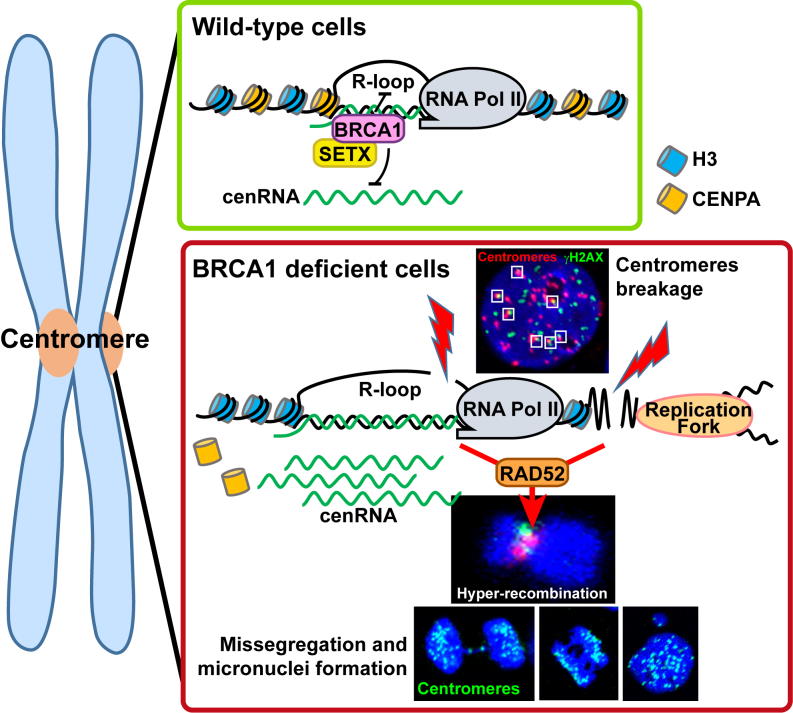BRCA1, a caretaker of centromere integrity
In this study published in the journal “Cell Death and Disease”, IPBS scientists highlight a new role for the tumor suppressor protein BRCA1 as a caretaker of centromere integrity. Centromeres are genomic regions essential for faithful chromosome segregation. They consist of tandemly repeated DNA sequences called alpha-satellites that are transcribed by RNA Polymerase II. The non-coding RNAs produced (cenRNAs) are key components of the centromeric chromatin which is characterized by nucleosomes bearing the histone H3 variant CENP-A. Functional or structural abnormalities of the centromeres can induce an incorrect distribution of chromosome number between daughter cells and chromosomal aberrations, such as fusions, which participate in carcinogenesis, senescence or cell death.
Germline mutations in BRCA1 predispose to breast and ovarian cancers. It is broadly accepted that BRCA1 maintains the stability of the genome by participating in DNA double-strand break (DSB) repair by homologous recombination. The constitutive localization of BRCA1 at centromere in the absence of exogenous stress had already been shown, but the mechanism underlying BRCA1 recruitment and function at these specific loci was not fully understood.
In this report, IPBS scientists show that BRCA1 association with centromeric chromatin depends on the presence of R-loops, which are three-stranded structures harboring a DNA:RNA hybrid produced during transcription. R-loops may have physiological roles but their uncontrolled accumulation is a threat to genome integrity. Scientists further determined that BRCA1 is required to limit the accumulation of R-loops at centromeric satellite repeats by allowing the recruitment of SETX, a DNA:RNA hybrid disassembly helicase. In the absence of BRCA1, the accumulation of R-loops leads to decreased CENP-A levels at centromeres, increased expression of cenRNAs and the formation of centromeric DSB, all these features being R-loop-dependent. The centromeric breaks observed in the absence of BRCA1 are associated with a RAD52-dependent hyper-recombination at alpha-satellite sequences, which participates in the instability of centromeric regions and abnormal chromosome segregation. Altogether, these findings provide molecular insights into the key function of BRCA1 in maintaining centromere stability and identity.

Scheme illustrating the role of BRCA1 in maintaining centromere stability.
Confocal microscopy images show the presence of double-strand breaks (green) at centromeres (red), the hyper-recombination phenotype at centromeric sequences (visualized on mitotic chromosome), chromosome segregation defects, as well as the formation of micronuclei in BRCA1-deficient human cells.
© F. Larminat et C. Racca

